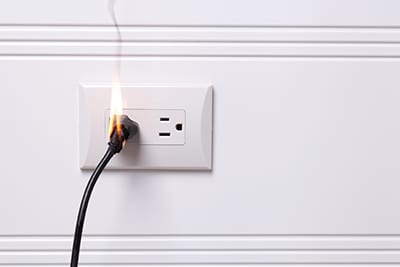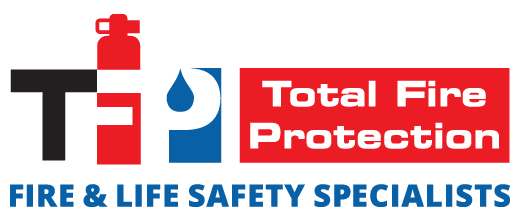 Workday equipment like computers, lights, and especially HVAC systems, all require electrical power to operate. The fairly complex network of panels, junction boxes, wires, and fixtures that provides power in a professional building brings with it a real risk of an electrical fire. In fact, some estimates posit that up to 8% of all commercial building fires are caused by malfunctions in the electrical system.
Workday equipment like computers, lights, and especially HVAC systems, all require electrical power to operate. The fairly complex network of panels, junction boxes, wires, and fixtures that provides power in a professional building brings with it a real risk of an electrical fire. In fact, some estimates posit that up to 8% of all commercial building fires are caused by malfunctions in the electrical system.
Where Do Electrical Fires Occur?
When properly designed and installed according to applicable regulations such as the National Electric Code, modern electrical systems are generally safe. However, a commercial building’s occupants can sometimes place too much demand on the system, potentially leading to an electrical fire. Electrical fires commonly start in places like wall outlets (when they are overloaded) or light fixtures (when using a bulb of incorrect wattage). But they can also start in an electrical panel, for example, if it malfunctions and results in a hotspot.
What Causes Electrical Fires?
There are a few well-known causes of electrical fires, but in general, the fire itself starts from sparks or heat from a malfunctioning or overloaded system. Specific causes include:
Corroded Wiring – Wiring can become damaged from age, water ingress, erroneous installation, or pest damage.
Poorly Installed Components – If components such as fixtures or panels are not properly sized for the application or simply installed incorrectly, fire risk could be elevated. Errors such as leaving a kink in a wire or not tightening a connection can result in excess heat buildup, which in turn could cause an electrical fire.
Old Equipment – Modern appliances, machinery, and IT necessities can place increased demand on existing electrical equipment. It’s a good idea to have aging components inspected by a qualified electrician and upgraded if needed.
How Can Electrical Fires Be Prevented?
Simple ways to prevent electrical fires include:
Infrared Inspection – Scheduling a periodic infrared electrical inspection can help identify potential issues before they become serious. Through the use of a specialized, heat visualizing camera, a technician can help identify potential trouble areas in an electrical system. For example, an overloaded outlet would appear differently than a non-overloaded outlet when viewed through an infrared camera. These tools are especially useful for detecting potential problems because they allow users to see issues that may be obscured by walls or other structures in a building. Regular infrared inspections are recommended in order to keep accurate tabs on the functionality of a building’s electrical system.
Proper Use of Outlets – It’s crucial to assure electrical outlets are not overloaded, as this is a common way for fires to start. A good rule of thumb is to have only one heat-producing appliance, such as a toaster or coffee maker, plugged into an outlet at a time. Another good practice is to avoid using extension cords for anything other than temporary needs.
Learn how to protect your NYC commercial buildings with an infrared electrical inspection from Total Fire Protection.




